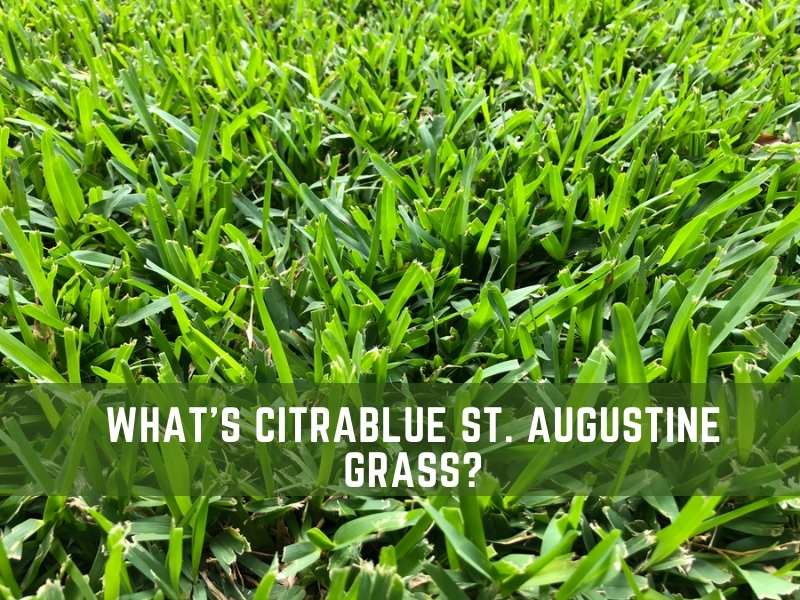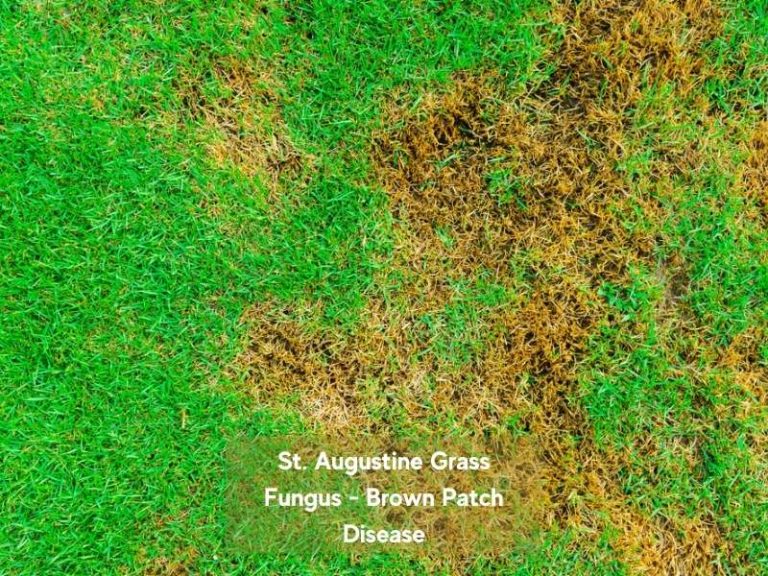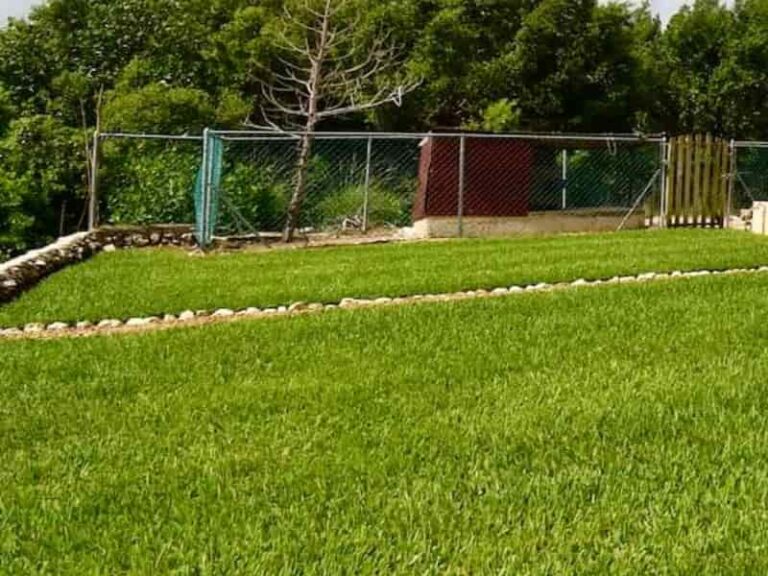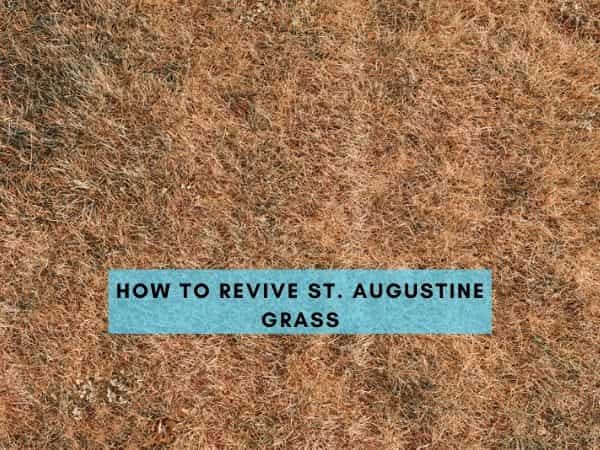What is CitraBlue St. Augustine Grass?
CitraBlue is one of the best cultivars of St. Augustine grass in terms of drought and disease resistance as well as cold and shade tolerance. To properly maintain a CitraBlue St. Augustine lawn, you should stick to the proper mowing, fertilizing, and hydration requirements because the grass spreads quite fast.
Compared to other cultivars of St. Augustine grass such as Floratam, Raleigh, and Palmetto, CitraBlue scores well on a suitability scale for most lawns. But, what makes it such a great turfgrass?
What is CitraBlue St. Augustine grass?
CitraBlue St. Augustine grass is a cultivated variety (cultivar) of St. Augustine turf grass that was developed in 2018 at the University of Florida under their turfgrass breeding program. This cultivar was bred to match or supersede other St. Augustine varieties in terms of resistance to drought and diseases, as well as the ability to tolerate cold and shady growing conditions.
Having been bred and tested in Florida, CitraBlue St. Augustine was developed to thrive in warm and sunny, southern climates. This St. Augustine cultivar is recommended for use in lawns, parks, and sports turfs.
Note: Currently, studies are still underway on how well CitraBlue St. Augustine can resist pests like chinch bugs and Sugarcane Mosaic Virus.
Characteristics of CitraBlue St. Augustine Grass

The most distinctive identifying feature of CitraBlue St. Augustine grass is its attractive blue-green color. Other notable characteristics include its great tolerance to shade, wear, and cold temperatures, as well as its decent resistance against drought and diseases.
Here are the main identifying characteristics of CitraBlue:
It has great tolerance to shade
CitraBlue St. Augustine grass has excellent shade tolerance that even beats that of Floratam St. Augustine. This cultivar still thrives even under dense canopies.
CitraBlue has a blue-green color
CitraBlue St. Augustine boasts a unique blue-green shade and a soft texture that makes it visually attractive. Meanwhile, the broad grass blades (8-9 mm wide) form a thick turf, further building upon its aesthetic appeal.
One of the most crucial physical characteristics of CitraBlue St. Augustine is that it has decent color retention in fall, compared to other St. Augustine grass cultivars. Thus, your lawn will still look great during the cold season.
It competes better against weeds
Due to its higher canopy density, CitraBlue St. Augustine easily crowds out weeds in lawns. The compact canopy prevents sunlight from reaching the weeds sprouting below, thus hampering the growth and emergence of unwanted plants.
With a more horizontal growth, this type of St. Augustine grass grows denser quickly, which is why it is able to outcompete weeds easily.
It is highly resistant to lawn diseases
CitraBlue St. Augustine is one of the most disease-resistant St. Augustine cultivars. It beats Floratam in terms of resistance to large patch, take-all root rot, and gray leaf spot diseases. However, it doesn’t fare as well against pests, with chinch bugs being one of its most common pests.
CitraBlue is tolerates high foot traffic better
Unlike several other sub-types of St. Augustine that easily die out under heavy usage, CitraBlue St. Augustine was cultivated to withstand high traffic. What’s more, this cultivar’s decent injury recovery enables it to bounce back faster from wear and tear.
Note: CitraBlue grass also recovers quickly from freeze damage after winter dormancy.
It’s highly drought resistance
Compared to many other sub-varieties of St. Augustine, including Floratam, CitraBlue has a better drought-hardiness. It maintains decent tough quality for longer in arid and semi-arid climates.
Can grow in sandy and clay soils
CitraBlue does well in sandy and clay soils. Meanwhile, its preferred soil pH is 6.0-6.9, but will still grow in saline conditions due to its excellent salt tolerance.
Maintenance Requirements
Due to its lesser vertical growth vis-à-vis other St. Augustine cultivars, CitraBlue requires minimal maintenance in terms of the mowing frequency. It also doesn’t need to be watered as much as classic St. Augustine turfgrass.
It has better cold tolerance
CitraBlue St. Augustine has decent cold-hardiness, which is the reason for its excellent fall color retention. It can still resist frost damage and retain green-colored patches even when the temperatures fall slightly below 40-degrees Fahrenheit. By contrast, most other St. Augustine cultivars turn brown under such temperature conditions.
Establishment
Just like all other St. Augustine cultivars, CitraBlue St. Augustine doesn’t produce adequate viable seed for commercialization. Its turfs are, therefore, usually established by sodding or plugging.
It’s also not advisable to grow CitraBlue alongside more aggressive St. Augustine turfgrass varieties like Floratam. They will suppress it, resulting in stunted growth. Ideally, you should kill your Floratam turf using Roundup before planting CitraBlue grass sod or plugs.
It has a more horizontal growth pattern
Just like other cultivars of the same species, CitraBlue spreads via above-ground runners called stolons. The stolons grow quickly horizontally, explaining why this cultivar is a fast lateral grower but exhibits slow vertical growth.
The growth habit appears to be more horizontal and dense, which makes it easy to grow into a thicker lawn compared to other common cultivars such as Floratam.
How much does CitraBlue St Augustine grass cost?
Since CitraBlue St. Augustine grass doesn’t yield adequate viable seed for commercialization, it’s usually grown via vegetative propagation or plugging. It’s cheaper to establish a CitraBlue St. Augustine lawn via sod compared to using plugs. For instance, CitraBlue St. Augustine sod pallets that can cover 450-500 square feet cost $275 or thereabout.
CitraBlue St. Augustine grass plugs (72 plugs) that can cover up to 72 square feet of yard space cost $65 at Sod Solutions. This means that you’ll spend about $455 to cover 490 square feet of yard space, which is significantly higher than the $275 you’d spend on sod.
Maintenance Guide for a CitraBlue St. Augustine Lawn
Proper care and maintenance for your CitraBlue lawn entail adopting a proper watering, mowing, and fertilizing schedule; as well as applying the necessary disease, weed, and pest control measures.
Watering Schedule
As already mentioned, CitraBlue is a more drought-hardy St. Augustine grass cultivar, thus doesn’t need to be watered as much or as frequently as other types of St. Augustine. Ideally, you should irrigate your St. Augustine turf every 3-6 days. Meanwhile, to ensure deeper soaking, water up to one inch of the lawn’s topsoil.
Mowing Requirements
CitraBlue has minimal vertical growth and thus doesn’t need to be mowed as often as other varieties of the same species. During the warm season, you should mow your lawn at a height of 1.5”-2”.
Meanwhile, in fall, it’s advisable to slightly increase the mowing height to 3” for deeper root growth. Deeper roots enable CitraBlue grass to survive during cold-season dormancy.
Note: You don’t want to mow your lawn too low (lower than 1.5”), as this reduces the density of the canopy, allowing invasive weeds to grow and compete with your turfgrass.
Fertilizer Requirements
For a healthy and dense CitraBlue turfgrass, fertilize your lawn once per month during fall. In the summer, apply a good slow-release organic fertilizer such as Milorganite 2-3 times. The rule of thumb is to apply 1lb nitrogen fertilizer per 1000 sq. ft. of lawn to maintain a healthy growth rate.
Keep in mind that Milorganite has iron in it, so if you normally rely on lawn iron supplements such as Ironite, you might want to skip the supplement completely. Otherwise, you’ll end up with too much iron in your turf.
Weed Control Measures
CitraBlue St. Augustine grass is vulnerable to a variety of weeds like crabgrass and chickweed. To prevent the emergence of annual weeds, apply a pre-emergent herbicide. A post-emergent herbicide should suffice for perennial weeds that are already present on your lawn.
When using herbicides on a CitraBlue lawn, ensure to follow the manufacturer’s guidelines.
Pest Control Measures
CitraBlue grass is prone to infestations from various pests including sod webworms and chinch bugs. If you’re going to use a granular insecticide, make sure you irrigate the lawn immediately after application to soak it into the soil.
Fungal Disease Control Measures
Even though CitraBlue St. Augustine is more disease resistant than other species of St. Augustine, it can still be attacked by fungal grass infections. To control CitraBlue grass fungi, apply a fungicide treatment such as Consan 20. See more on treating St. Augustine grass fungus here.
References
- Grantly Ricketts, University of Florida, IFAS Extension: CitraBlue a new St. Augustinegrass for 2019
- Jennifer Howard, NC State University Crop and Soil Sciences News: University Scientists Grow Water Savings with Drought-Tolerant Turfgrass
- Laurie E, University of Florida: St. Augustinegrass for Florida Lawns





What brand weed killer is best for the new Citrablue grass. Most contain Atrazine or 2,4D dimethylamine salt. I’d one better than the other?
Hello, I used Citrablue on my loan . I have this grass about for 2 years. First year it was beautiful, but this year there is crabgrass all over. I am not sure which product to use to kill just a weed not a grass. I can’t find good information about it
Sorry to hear so, Viktoria. You can get rid of crabgrass with tenacity (chemical option), or if you decide to use a natural method, go for baking soda. Here are a few guides that can help overcome crabgrass on the lawn.
How to Get Rid of Crabgrass
Best Crabgrass Killer that Won’t Kill Grass
Killing Crabgrass With Baking Soda